
Nelson Mandela once declared that Ethiopia held a special place in his imagination.
Indeed, the land of coffee, ancient architecture and a resilient people does carry a certain mystique… and a very long, torturous history.
1/
--Long Thread--
[Pic: Children of the Omo Valley]
Indeed, the land of coffee, ancient architecture and a resilient people does carry a certain mystique… and a very long, torturous history.
1/
--Long Thread--
[Pic: Children of the Omo Valley]

2/
See, Mandela spent two weeks in July 1962 in Ethiopia where he learned the tricks of guerilla warfare from Col Fekadu Wakene, a corporal in the riot battalion of the Ethiopian police force at the time.
Mandela was in Ethiopia by invitation of Emperor Haile Selassie I.
See, Mandela spent two weeks in July 1962 in Ethiopia where he learned the tricks of guerilla warfare from Col Fekadu Wakene, a corporal in the riot battalion of the Ethiopian police force at the time.
Mandela was in Ethiopia by invitation of Emperor Haile Selassie I.

3/
At 1.1mn km², a population of 110mn & 80 ethnic groups, Ethiopia is one of the oldest countries in the world, having come into existence circa 980 BCE.
Most intriguing is the nation’s ancient links to Islam, and Christianity, which was declared a state religion in 330 CE.
At 1.1mn km², a population of 110mn & 80 ethnic groups, Ethiopia is one of the oldest countries in the world, having come into existence circa 980 BCE.
Most intriguing is the nation’s ancient links to Islam, and Christianity, which was declared a state religion in 330 CE.
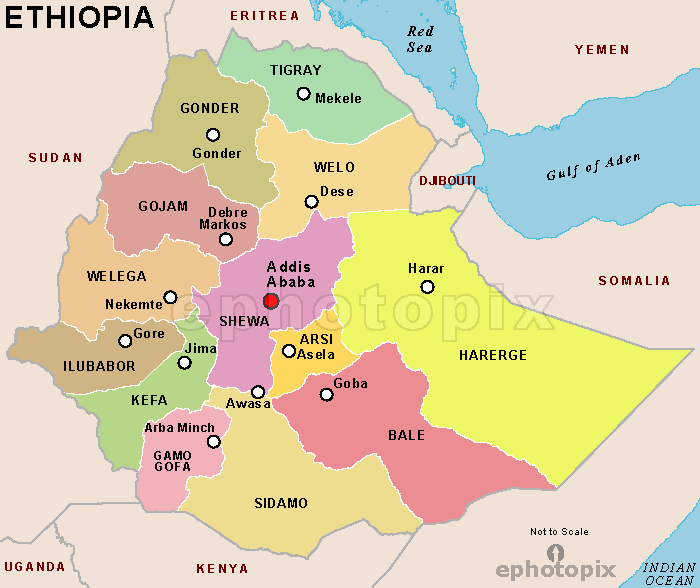
4/
Ethiopia is the world’s 5th largest coffee producer, exporting $836mn worth in 2018, comprising 1/3rd of exports.
Agri made up a third of the country’s $84bn 2018 GDP with industry and services making up 25% and 37% respectively.
GDP tripled in the period 2008-2018
Ethiopia is the world’s 5th largest coffee producer, exporting $836mn worth in 2018, comprising 1/3rd of exports.
Agri made up a third of the country’s $84bn 2018 GDP with industry and services making up 25% and 37% respectively.
GDP tripled in the period 2008-2018
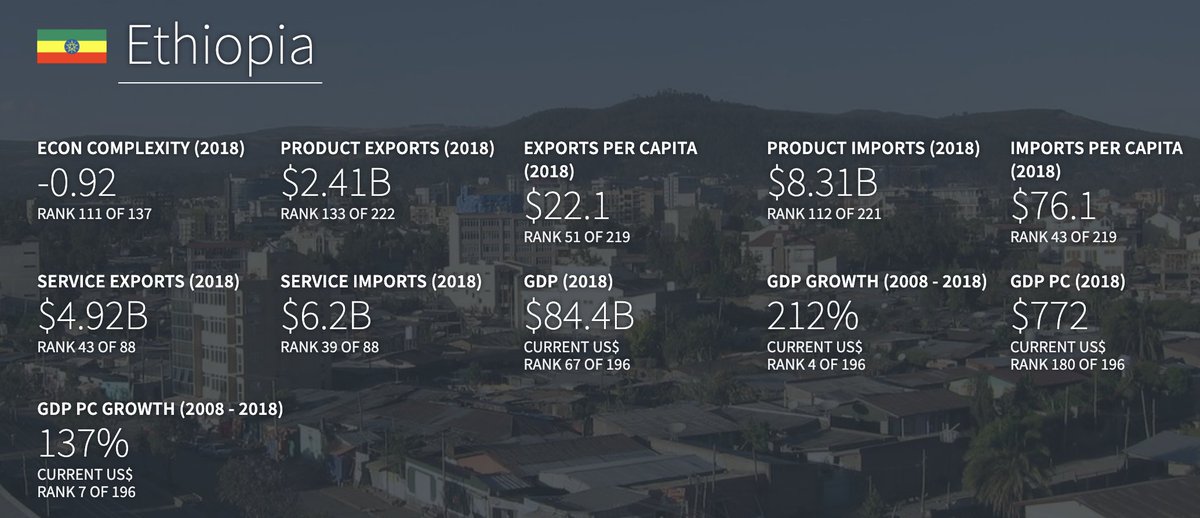
5/
Africa’s 2ⁿᵈ most populous country, with a documented history dating back to the 10th century BCE, gets mentioned twice in Homer’s Iliad and hosts the oldest standing structure in Sub-Saharan Africa - the Temple of the Moon in Yeha – built in 700 BCE.
Africa’s 2ⁿᵈ most populous country, with a documented history dating back to the 10th century BCE, gets mentioned twice in Homer’s Iliad and hosts the oldest standing structure in Sub-Saharan Africa - the Temple of the Moon in Yeha – built in 700 BCE.
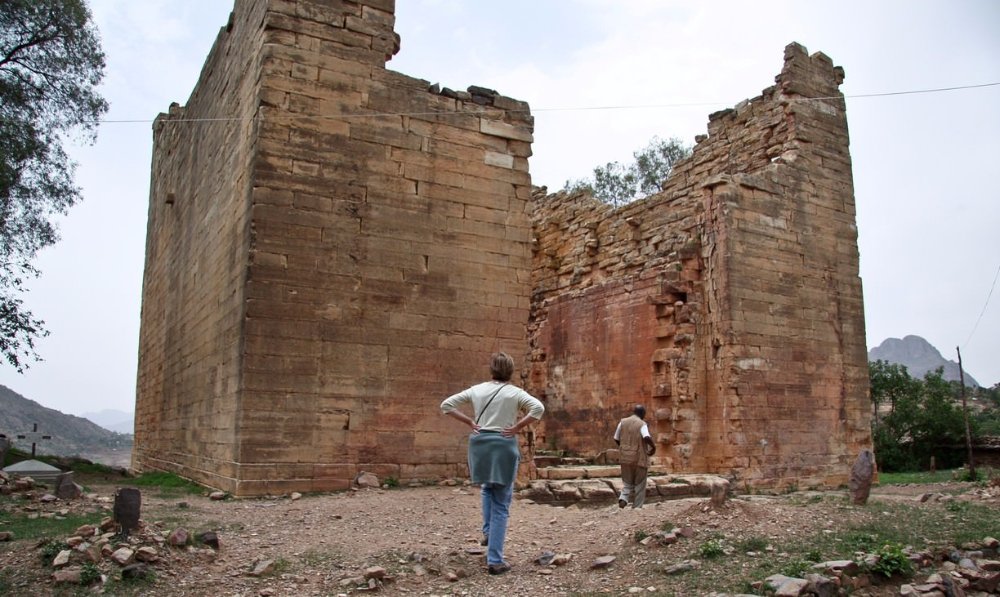
6/
The Kebra Negast (an account written in the 14ᵗʰ century) references the Queen of Sheba (Queen Makeda) whose son with King Solomon, Menelik I, founded the Solomonic Dynasty that ruled for centuries and ended with the ouster of the 225ᵗʰ descendant, Haile Selassie in 1974.
The Kebra Negast (an account written in the 14ᵗʰ century) references the Queen of Sheba (Queen Makeda) whose son with King Solomon, Menelik I, founded the Solomonic Dynasty that ruled for centuries and ended with the ouster of the 225ᵗʰ descendant, Haile Selassie in 1974.
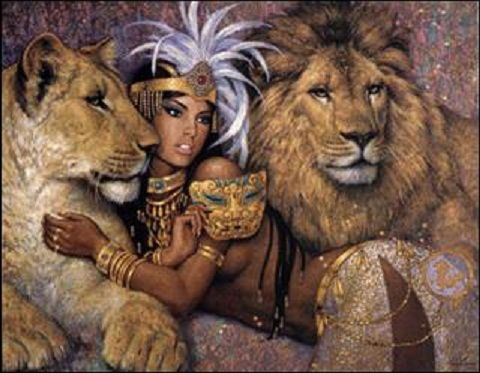
7/
20 years after King Solomon’s dalliance with the queen, Menelik I visited Jerusalem and apparently left with the Ark of the Covenant.
It is believed that the receptacle for the 10 commandments lies in the chapel of the Lady of Zion in Aksum and no one is allowed to view it...
20 years after King Solomon’s dalliance with the queen, Menelik I visited Jerusalem and apparently left with the Ark of the Covenant.
It is believed that the receptacle for the 10 commandments lies in the chapel of the Lady of Zion in Aksum and no one is allowed to view it...
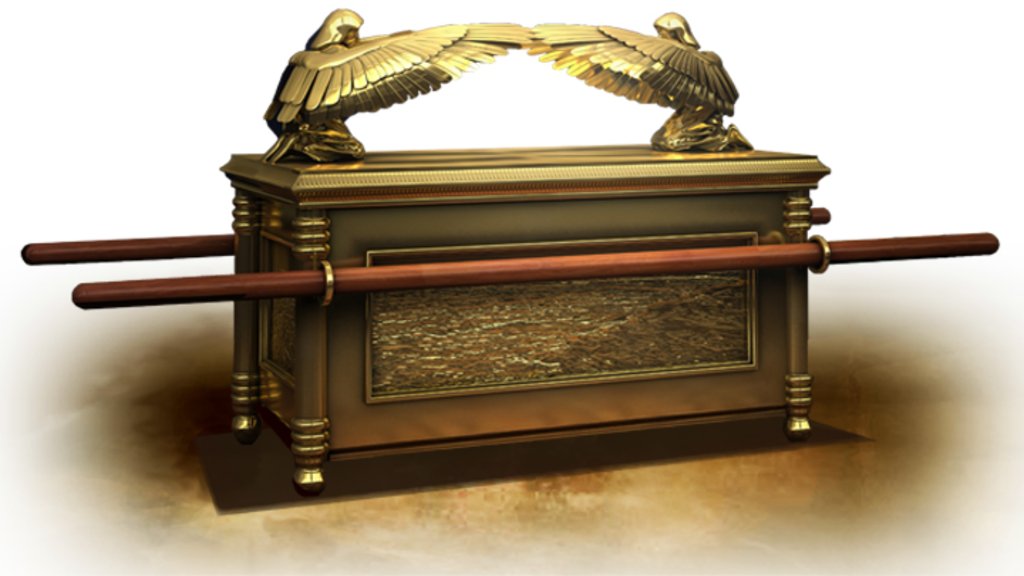
8/
Ethiopia began as the empire of Aksum (80 BCE – 825 CE), located in Tigray, Eritrea and Somalia.
Aksum was one of the first African polities to issue its own currency, had its own alphabet and was deemed one of the 4 great powers alongside Rome, Persia, and China.
Ethiopia began as the empire of Aksum (80 BCE – 825 CE), located in Tigray, Eritrea and Somalia.
Aksum was one of the first African polities to issue its own currency, had its own alphabet and was deemed one of the 4 great powers alongside Rome, Persia, and China.
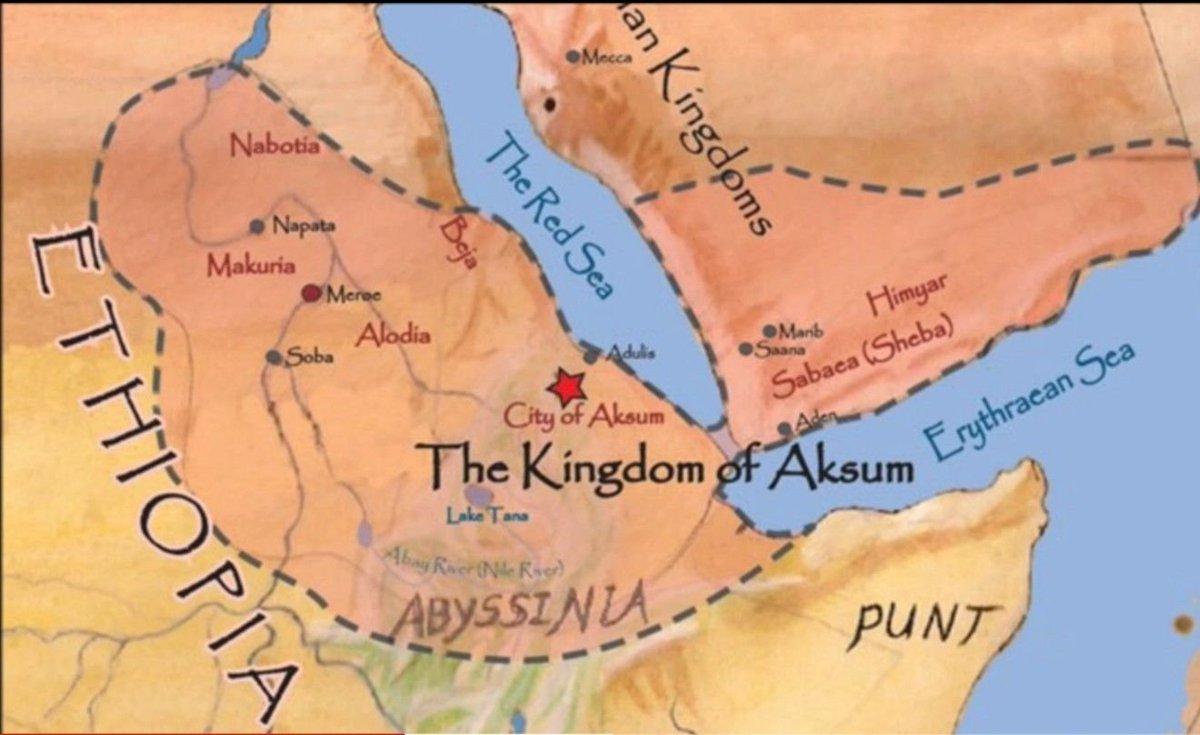
9/
Aksum went into decline in the 6ᵗʰ Century CE giving way to the latter Solomonic Dynasty beginning in 1270 CE.
It was from this era that came Emperors Yohannes IV, Tewodros II, Menelik II, Haile Selassie I and Empress Zewditu (pictured).
Aksum went into decline in the 6ᵗʰ Century CE giving way to the latter Solomonic Dynasty beginning in 1270 CE.
It was from this era that came Emperors Yohannes IV, Tewodros II, Menelik II, Haile Selassie I and Empress Zewditu (pictured).
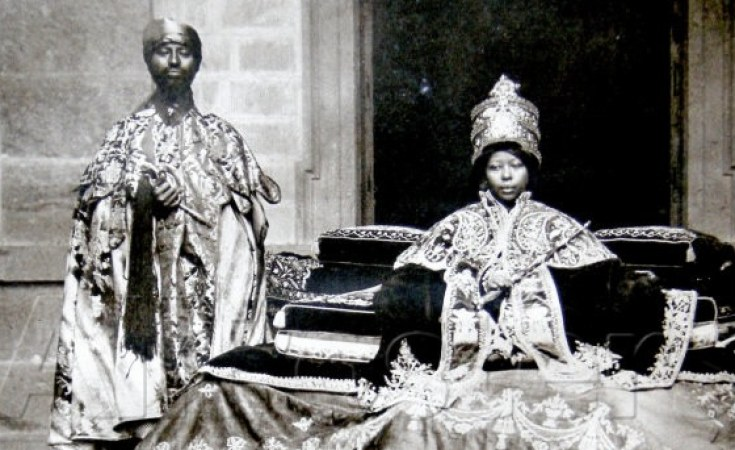
10/
Fast-forward to 1855 and the reign of Emperor Tewodros II - an outlaw warrior who sought to unify Ethiopia but faced rebellions across the land.
In 1863, Tewodros II wrote to Queen Victoria seeking help to quell the revolts but the letter was ignored and forgotten for years.
Fast-forward to 1855 and the reign of Emperor Tewodros II - an outlaw warrior who sought to unify Ethiopia but faced rebellions across the land.
In 1863, Tewodros II wrote to Queen Victoria seeking help to quell the revolts but the letter was ignored and forgotten for years.
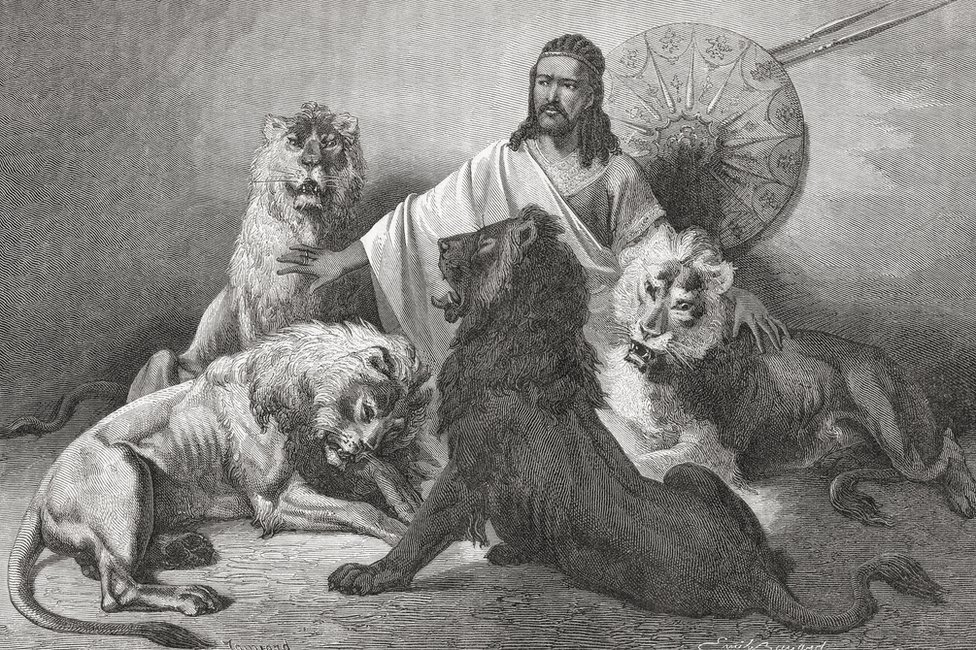
11/
Only after Tewodros II had imprisoned a number of emissaries did Britain send over an expeditionary force of 53,000 in 1867.
At the Battle of Magdala, Tewodros II released the European prisoners but had 300 Ethiopian prisoners pushed off a cliff.
journals.sagepub.com/doi/pdf/10.117…
Only after Tewodros II had imprisoned a number of emissaries did Britain send over an expeditionary force of 53,000 in 1867.
At the Battle of Magdala, Tewodros II released the European prisoners but had 300 Ethiopian prisoners pushed off a cliff.
journals.sagepub.com/doi/pdf/10.117…
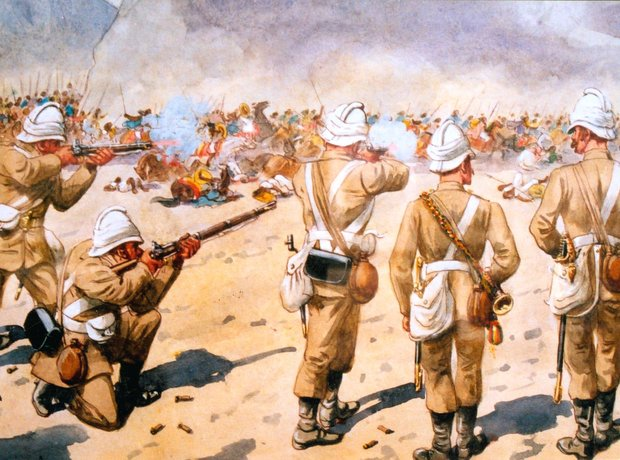
12/
Sir Henry Morton Stanley, who was to later gain infamy as the architect of King Leopold’s reign of terror in the Congo, cut his teeth as a special correspondent for the New York Herald in Ethiopia reporting on the fall of Magdala in 1868.
Sir Henry Morton Stanley, who was to later gain infamy as the architect of King Leopold’s reign of terror in the Congo, cut his teeth as a special correspondent for the New York Herald in Ethiopia reporting on the fall of Magdala in 1868.

13/
Facing defeat, Tewodros II shot himself with a pistol gifted by Queen Victoria and the British went on a looting spree, carting away ancient manuscripts, artefacts and valuables.
They also took with them hair that they cut from the dead Emperor.
bbc.com/news/world-afr….
Facing defeat, Tewodros II shot himself with a pistol gifted by Queen Victoria and the British went on a looting spree, carting away ancient manuscripts, artefacts and valuables.
They also took with them hair that they cut from the dead Emperor.
bbc.com/news/world-afr….
14/
In Nov 1889, Emperor Menelik II was crowned ‘King of Kings, Emperor of Ethiopia, Conquering Lion of the Tribe of Judah.’
Revered just as much as Menelik I, Menelik II made history after he defeated the Italians at the Battle of Adwa in 1896.
In Nov 1889, Emperor Menelik II was crowned ‘King of Kings, Emperor of Ethiopia, Conquering Lion of the Tribe of Judah.’
Revered just as much as Menelik I, Menelik II made history after he defeated the Italians at the Battle of Adwa in 1896.
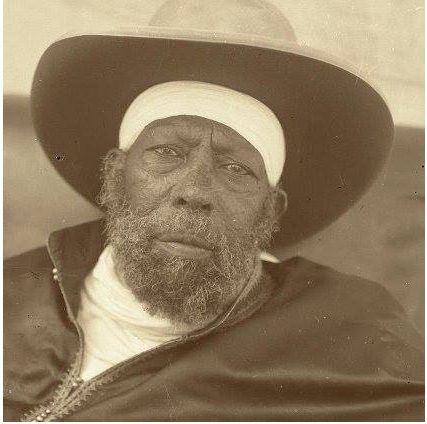
15/
So complete was the defeat at Adwa that protests broke out across Italy & the Prime Minister later resigned.
While the captured Italians were treated well, the Italians mutilated the right hands and left feet of the 800 Ethiopian PoWs they captured.
satenaw.com/the-battle-of-…
So complete was the defeat at Adwa that protests broke out across Italy & the Prime Minister later resigned.
While the captured Italians were treated well, the Italians mutilated the right hands and left feet of the 800 Ethiopian PoWs they captured.
satenaw.com/the-battle-of-…
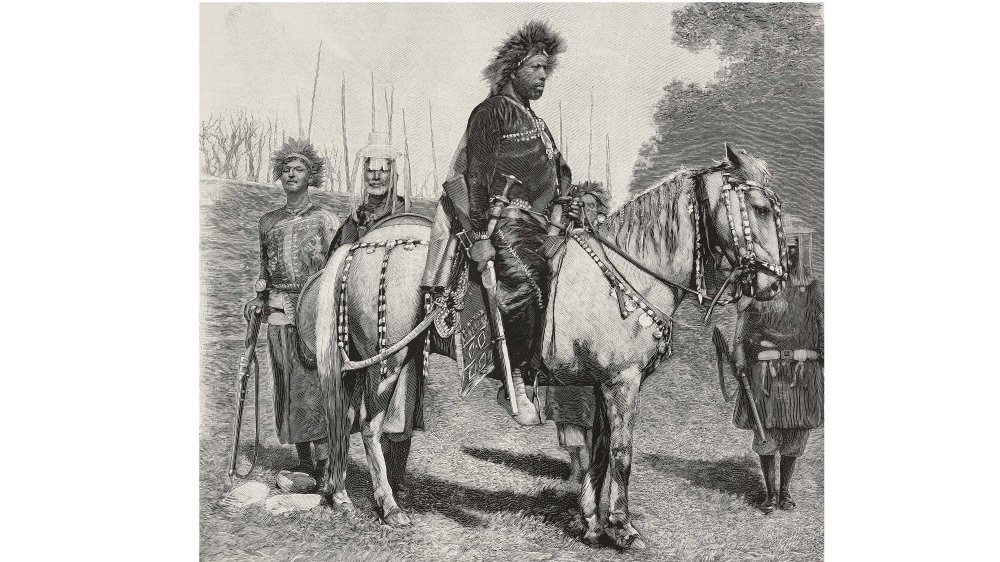
16/
In 1930, Ras Tafari Makonnen was crowned Emperor Haile Selassie I, ‘King of Kings, Conquering Lion of the Tribe of Judah, Lord of Lords, and Elect of God,’ at a spectacular event befitting an emperor (never mind his stature).
johnryle.com/?article=buryi…
In 1930, Ras Tafari Makonnen was crowned Emperor Haile Selassie I, ‘King of Kings, Conquering Lion of the Tribe of Judah, Lord of Lords, and Elect of God,’ at a spectacular event befitting an emperor (never mind his stature).
johnryle.com/?article=buryi…
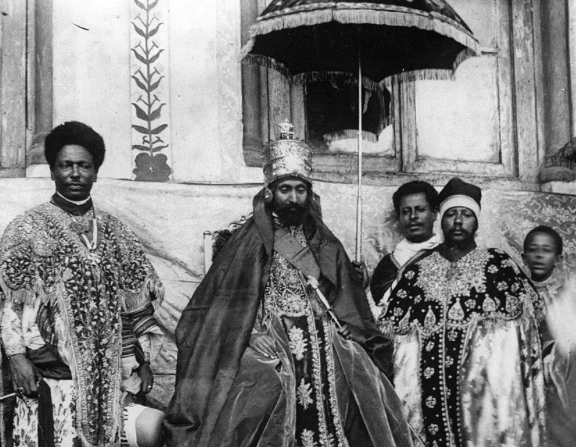
17/
As governor of Harar province before becoming emperor, Selassie's title had been Ras Tafari:
-Ras meaning ‘Head’ and
-Tafari meaning ‘one who is respected/feared'
Hence the origins of the ‘Rastafari’ name for the Rastafari movement that considers him an iconic figure.
As governor of Harar province before becoming emperor, Selassie's title had been Ras Tafari:
-Ras meaning ‘Head’ and
-Tafari meaning ‘one who is respected/feared'
Hence the origins of the ‘Rastafari’ name for the Rastafari movement that considers him an iconic figure.
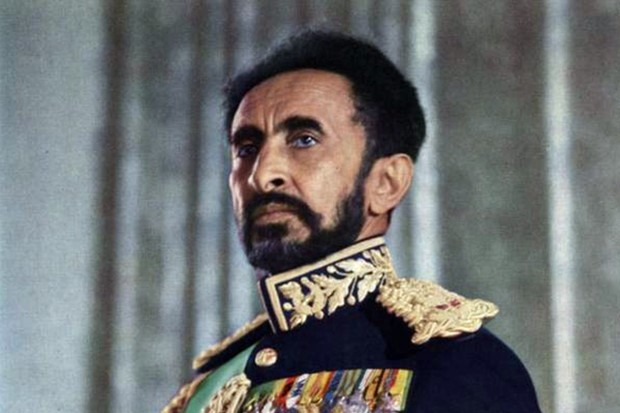
18/
Selassie’s reign soon ran into trouble when Italy’s Mussolini sought to avenge the defeat at Adwa, invading Ethiopia in Oct 1935.
The Italians took Addis Ababa in May 1936 and Selassie fled into exile in England.
Selassie’s reign soon ran into trouble when Italy’s Mussolini sought to avenge the defeat at Adwa, invading Ethiopia in Oct 1935.
The Italians took Addis Ababa in May 1936 and Selassie fled into exile in England.
19/
Mussolini’s troops used mustard gas in contravention of the Geneva convention, executed monks at the Debre Libanos Monastery and instituted apartheid-like laws.
In Feb 1937, they massacred over 19,000 Ethiopians in Addis Ababa over 3 days.
historytoday.com/reviews/addis-…
Mussolini’s troops used mustard gas in contravention of the Geneva convention, executed monks at the Debre Libanos Monastery and instituted apartheid-like laws.
In Feb 1937, they massacred over 19,000 Ethiopians in Addis Ababa over 3 days.
historytoday.com/reviews/addis-…
20/
In 1941 the Italians were defeated with the help of British & South African troops, and Selassie returned with a renewed perspective to modernise the nation.
He even granted amnesty to the Italian forces that had occupied Ethiopia in his absence.
In 1941 the Italians were defeated with the help of British & South African troops, and Selassie returned with a renewed perspective to modernise the nation.
He even granted amnesty to the Italian forces that had occupied Ethiopia in his absence.
21/
While Selassie transformed Ethiopia – 1ˢᵗ written constitution, public health services, founding and hosting the OAU - he preserved the old feudal system and chose to ignore the famines of 1958 (Tigray), 1966 (Amhara) and 1972-73 (Wollo and Tigray)
blogs.harvard.edu/wheredisasters…
While Selassie transformed Ethiopia – 1ˢᵗ written constitution, public health services, founding and hosting the OAU - he preserved the old feudal system and chose to ignore the famines of 1958 (Tigray), 1966 (Amhara) and 1972-73 (Wollo and Tigray)
blogs.harvard.edu/wheredisasters…
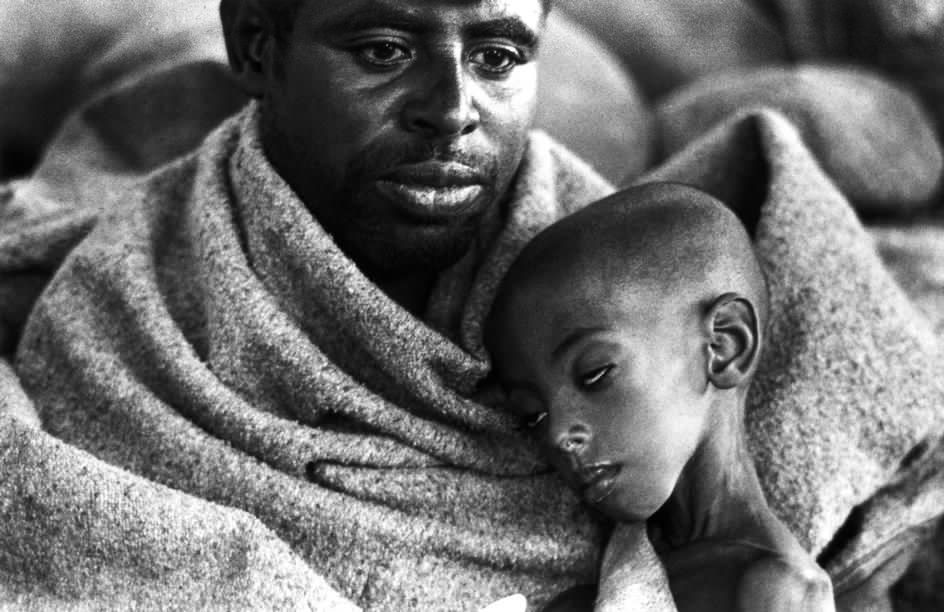
22/
In Sep 1974, Haile Selassie was deposed, arrested and driven away in a Volkswagen Beetle.
His failure to undertake economic and social reforms, landlessness and suffering caused by famine had finally led to a coup d’état.
He was murdered in detention in 1975.
In Sep 1974, Haile Selassie was deposed, arrested and driven away in a Volkswagen Beetle.
His failure to undertake economic and social reforms, landlessness and suffering caused by famine had finally led to a coup d’état.
He was murdered in detention in 1975.
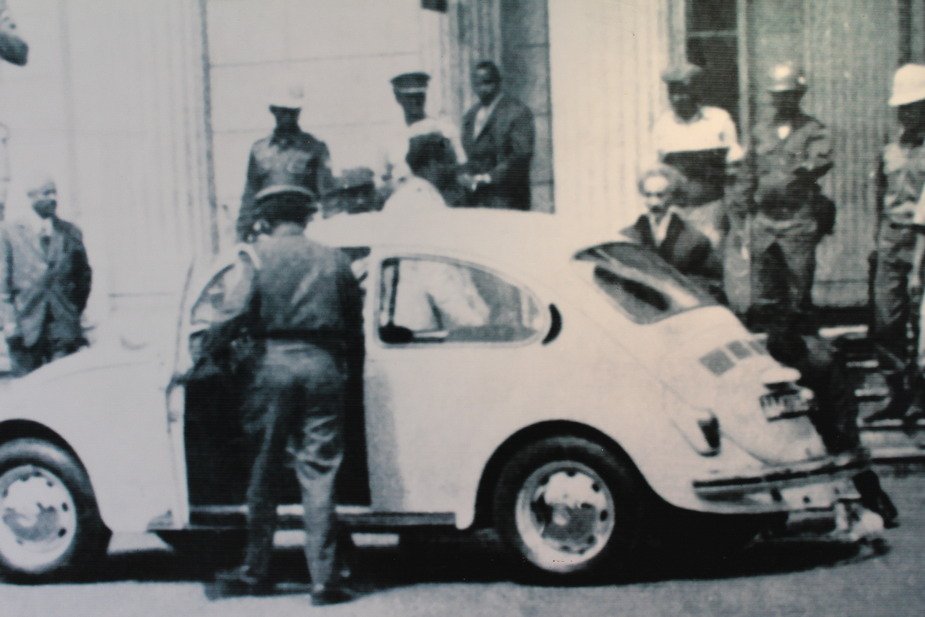
23/
Resistance
Tigrayan resistance began in 1896 during the reign of Emperor Menelik II when he deployed 80,000 soldiers against the Italians in Tigray without adequate provisions, forcing them to live off the land at the expense and pain of the locals.
countrystudies.us/ethiopia/127.h…
Resistance
Tigrayan resistance began in 1896 during the reign of Emperor Menelik II when he deployed 80,000 soldiers against the Italians in Tigray without adequate provisions, forcing them to live off the land at the expense and pain of the locals.
countrystudies.us/ethiopia/127.h…
24/
In Sep 1943 the Woyane Rebellion erupted in Tigray.
It was caused by Selassie’s attempts to weaken the power of the regional nobles by introducing regional administrations.
[Tigrayans make up 6% of the pop'n with the Oromo & Amhara at 34% & 27%]
tigray.net/2012/12/25/fir…
In Sep 1943 the Woyane Rebellion erupted in Tigray.
It was caused by Selassie’s attempts to weaken the power of the regional nobles by introducing regional administrations.
[Tigrayans make up 6% of the pop'n with the Oromo & Amhara at 34% & 27%]
tigray.net/2012/12/25/fir…
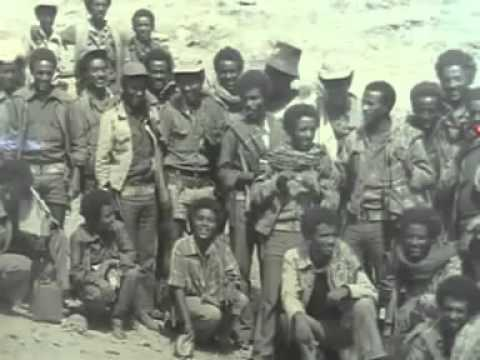
25/
Facing stiff resistance from the insurgents, who incidentally had access to Italian weapons left over after 1941, Selassie invited the British Royal Airforce to bomb Tigray - hundreds of bombs were dropped, including 54 on a single day on Mekelle.
tand-tesfana.webs.com/The_Origins_Of…
Facing stiff resistance from the insurgents, who incidentally had access to Italian weapons left over after 1941, Selassie invited the British Royal Airforce to bomb Tigray - hundreds of bombs were dropped, including 54 on a single day on Mekelle.
tand-tesfana.webs.com/The_Origins_Of…

26/
Tigrayans were forced to pay up and their land was confiscated and distributed to loyal gentry as a punishment and as a deterrent against future revolt.
A new tax system was imposed that cost five times more than they had paid under the Italians.
martinplaut.com/2019/10/06/whe…
Tigrayans were forced to pay up and their land was confiscated and distributed to loyal gentry as a punishment and as a deterrent against future revolt.
A new tax system was imposed that cost five times more than they had paid under the Italians.
martinplaut.com/2019/10/06/whe…
27/
In 1958, the Tigray region was hit by famine and the refusal of Selassie to send enough emergency food aid led to the deaths of 100,000 people.
The resentment and bitterness against the emperor continued to simmer.
borgenproject.org/famine-and-pol….
hrw.org/sites/default/…
In 1958, the Tigray region was hit by famine and the refusal of Selassie to send enough emergency food aid led to the deaths of 100,000 people.
The resentment and bitterness against the emperor continued to simmer.
borgenproject.org/famine-and-pol….
hrw.org/sites/default/…
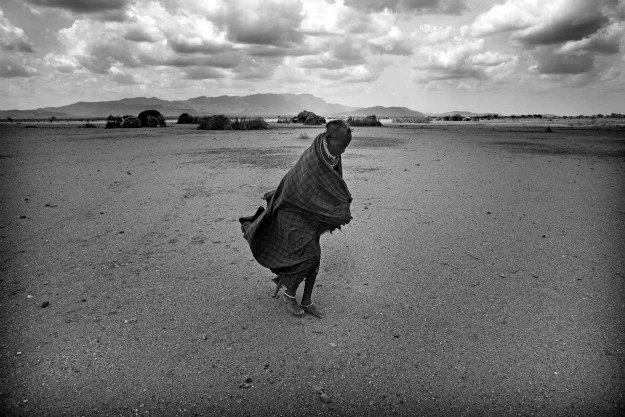
28/
The TPLF
From the Tigray University Students' Association came the leftist Tigrayan National Org'n (TNO) in 1974, which later became the springboard for the Tigray People’s Liberation Front (TPLF), a guerilla band that became a party in Feb 1975.
academic.oup.com/afraf/article/…
The TPLF
From the Tigray University Students' Association came the leftist Tigrayan National Org'n (TNO) in 1974, which later became the springboard for the Tigray People’s Liberation Front (TPLF), a guerilla band that became a party in Feb 1975.
academic.oup.com/afraf/article/…
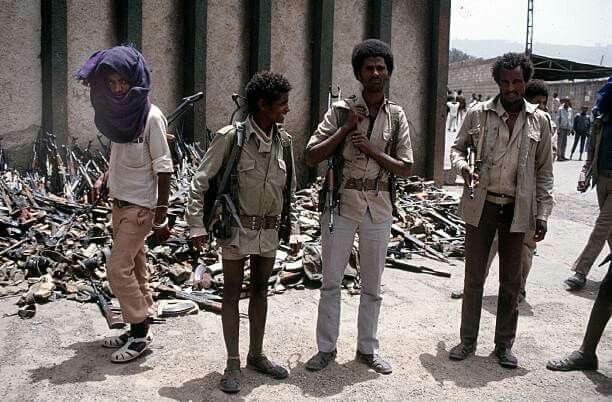
29/
In 1974, the Derg ("committee") comprising junior army, police and prison officers seized power and established Ethiopia as a Marxist-Leninist state.
Major Mengistu Haile Mariam from the army's 3ʳᵈ Brigade emerged as the leader in Feb. 1977 after a brutal internal struggle.
In 1974, the Derg ("committee") comprising junior army, police and prison officers seized power and established Ethiopia as a Marxist-Leninist state.
Major Mengistu Haile Mariam from the army's 3ʳᵈ Brigade emerged as the leader in Feb. 1977 after a brutal internal struggle.
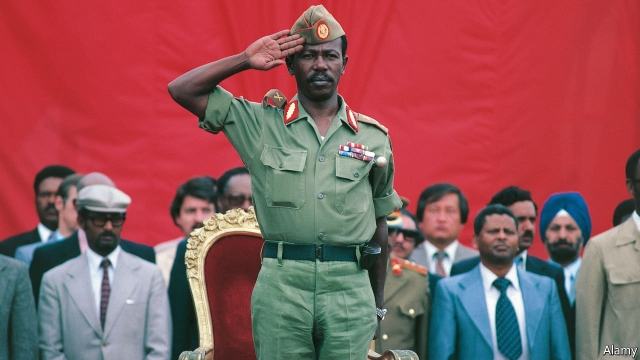
30/
On Nov 24, 1974, 10 weeks after the start of the revolution, the Derg executed 60 royals, govt and military officials by firing squad at what was later christened the Massacre of the Sixty or Tikuru Kidami.
There was no trial, no hearing.
ethiopianreview.com/content/5122
On Nov 24, 1974, 10 weeks after the start of the revolution, the Derg executed 60 royals, govt and military officials by firing squad at what was later christened the Massacre of the Sixty or Tikuru Kidami.
There was no trial, no hearing.
ethiopianreview.com/content/5122
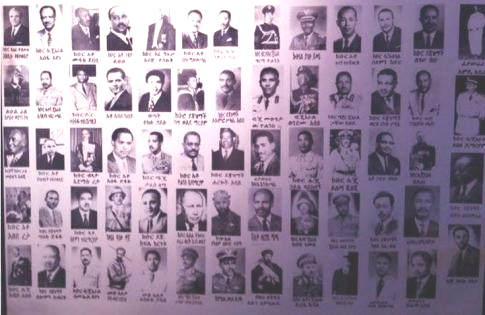
31/
At Meskel Square in April 1977, Mengistu declared the start of the Red Terror campaign in a speech where he smashed 3 bottles containing a red liquid while proclaiming:
“Death to counter-revolutionaries! Death to the EPRP!"
The stage was set for what was to follow.
At Meskel Square in April 1977, Mengistu declared the start of the Red Terror campaign in a speech where he smashed 3 bottles containing a red liquid while proclaiming:
“Death to counter-revolutionaries! Death to the EPRP!"
The stage was set for what was to follow.

32/
Named for the 1918 mass killings by the Bolsheviks in Russia, the Red Terror targeted anyone the Derg viewed as an enemy including members of the Ethiopian People’s Revolutionary Party (EPRP), the All-Ethiopia Socialist Movement (MEISON) & the TPLF.
irishtimes.com/news/ethiopia-…
Named for the 1918 mass killings by the Bolsheviks in Russia, the Red Terror targeted anyone the Derg viewed as an enemy including members of the Ethiopian People’s Revolutionary Party (EPRP), the All-Ethiopia Socialist Movement (MEISON) & the TPLF.
irishtimes.com/news/ethiopia-…

33/
Between 1976-78, “the Derg plunged Ethiopia into an unprecedented era of indiscriminate detentions, assassinations, extra-judicial killings and summary executions,” wiping out some of the nation’s best and brightest.
usf.edu/arts-sciences/…
Between 1976-78, “the Derg plunged Ethiopia into an unprecedented era of indiscriminate detentions, assassinations, extra-judicial killings and summary executions,” wiping out some of the nation’s best and brightest.
usf.edu/arts-sciences/…
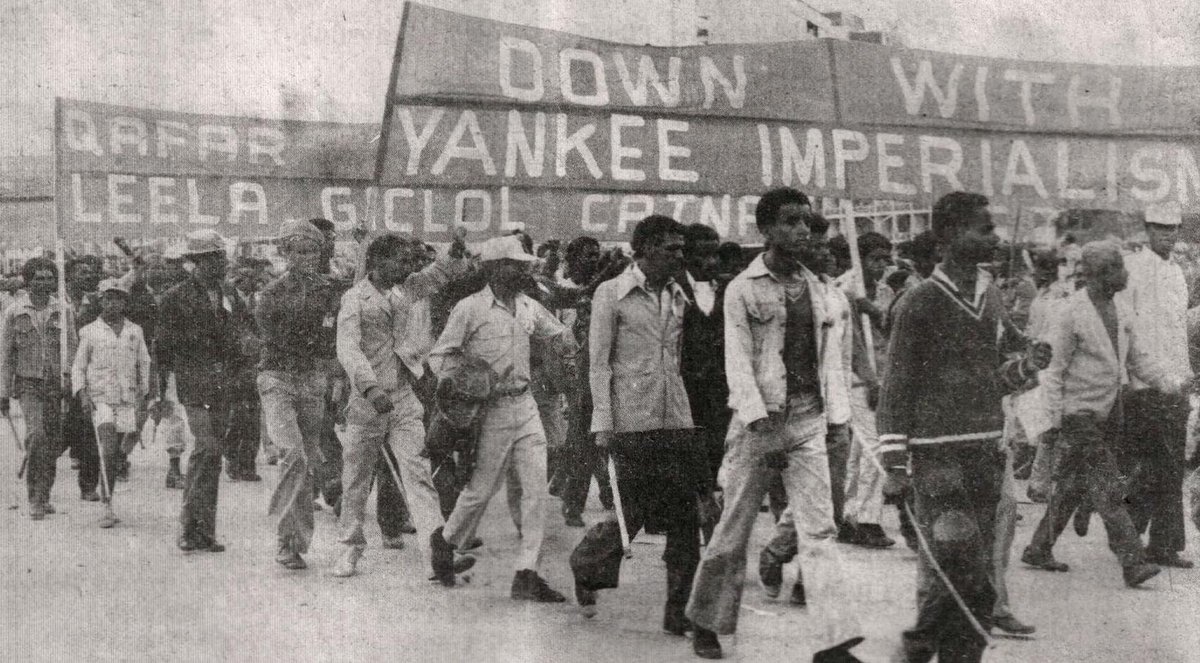
34/
On Oct 23, 1984, the BBC’s Michael Buerk (and Mo Amin) reported on a ‘biblical famine’ in Ethiopia, sparking massive relief efforts including Live Aid and USA for Africa.
Fatalities: 200k – 1mn.
That year, Ethiopia spent $1.2bn on soviet arms.

On Oct 23, 1984, the BBC’s Michael Buerk (and Mo Amin) reported on a ‘biblical famine’ in Ethiopia, sparking massive relief efforts including Live Aid and USA for Africa.
Fatalities: 200k – 1mn.
That year, Ethiopia spent $1.2bn on soviet arms.

35/
Sidebar: History was made at the Live Aid concert at Wembley on July 13, 1985 when Queen's Freddie Mercury rendered his legendary performance.
Others that performed: U2, David Bowie, Elton John, Dire Straits, Paul McCartney, Sting and Phil Collins.

Sidebar: History was made at the Live Aid concert at Wembley on July 13, 1985 when Queen's Freddie Mercury rendered his legendary performance.
Others that performed: U2, David Bowie, Elton John, Dire Straits, Paul McCartney, Sting and Phil Collins.

36/
Between 1977 – 1991, the Russians sent 17,000+ Cubans to Ethiopia and Mengistu spent $9bn on Soviet arms shipments…
...or as Michela Wrong puts it, “$5,400 worth of weapons for every man, woman and child in the country.”
[Mengistu with Fidel and Raul Castro, Havana, 1975]
Between 1977 – 1991, the Russians sent 17,000+ Cubans to Ethiopia and Mengistu spent $9bn on Soviet arms shipments…
...or as Michela Wrong puts it, “$5,400 worth of weapons for every man, woman and child in the country.”
[Mengistu with Fidel and Raul Castro, Havana, 1975]
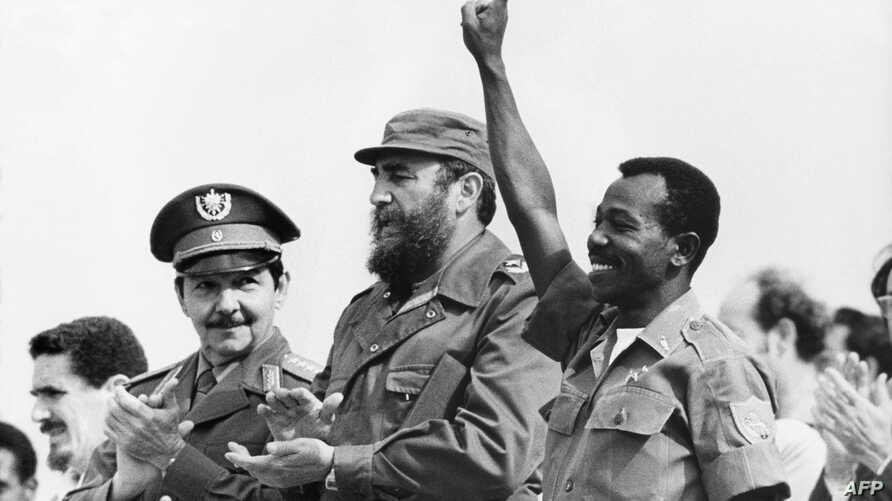
37/
The Ethiopian civil war kicked off in 1974.
Insurgencies erupted in all 14 regions and despite Soviet support, the govt suffered heavy casualties incl the loss of 3 battalions to Eritrean rebels at Nakfa and 4 divisions to the TPLF in Tigray in 1988.
globalsecurity.org/military/world…
The Ethiopian civil war kicked off in 1974.
Insurgencies erupted in all 14 regions and despite Soviet support, the govt suffered heavy casualties incl the loss of 3 battalions to Eritrean rebels at Nakfa and 4 divisions to the TPLF in Tigray in 1988.
globalsecurity.org/military/world…
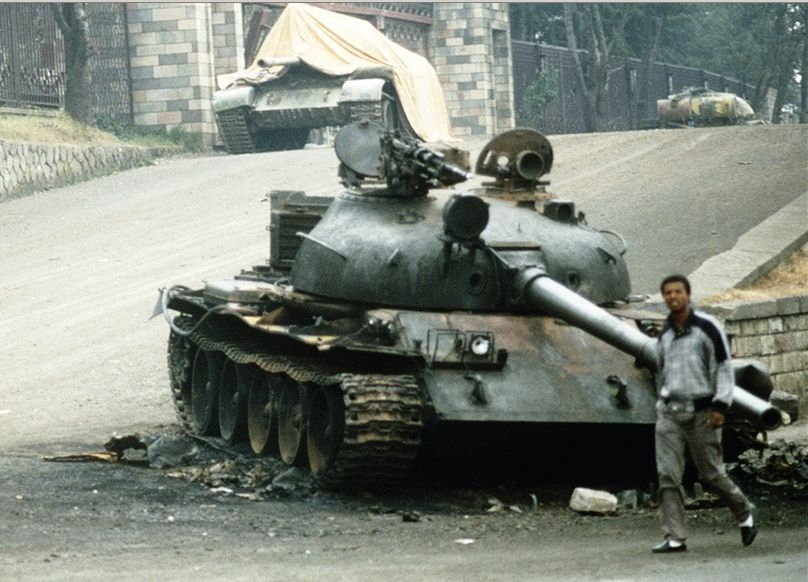
38/
The Mengistu regime used napalm (applied to horrific effect by the US in Vietnam) against citizens in rebel-held areas such as Eritrea and Tigray, leading to hundreds of thousands fleeing into Sudan as refugees in both 1978 and 1985 (famine year).
i.guim.co.uk/img/media/5e4d…
The Mengistu regime used napalm (applied to horrific effect by the US in Vietnam) against citizens in rebel-held areas such as Eritrea and Tigray, leading to hundreds of thousands fleeing into Sudan as refugees in both 1978 and 1985 (famine year).
i.guim.co.uk/img/media/5e4d…
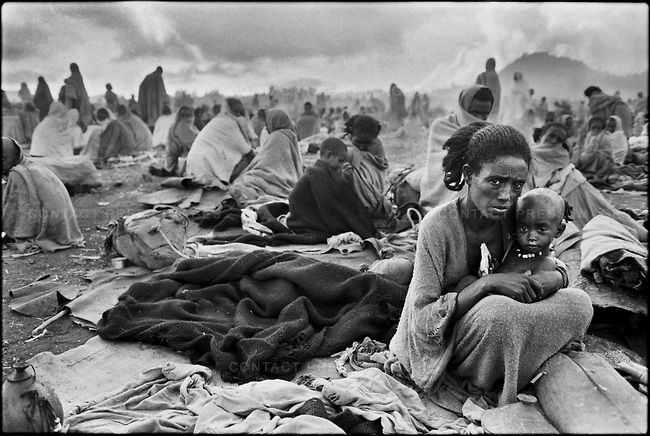
39/
The fall of the Soviet Union, the 1985 famine and relentless assaults by the Ethiopian people's Revolutionary Democratic Front (EPRDF), a coalition of rebel groups led by the TPLF, eventually defeated the Derg in May 1991.
Mengistu immediately fled into exile in Zimbabwe.
The fall of the Soviet Union, the 1985 famine and relentless assaults by the Ethiopian people's Revolutionary Democratic Front (EPRDF), a coalition of rebel groups led by the TPLF, eventually defeated the Derg in May 1991.
Mengistu immediately fled into exile in Zimbabwe.
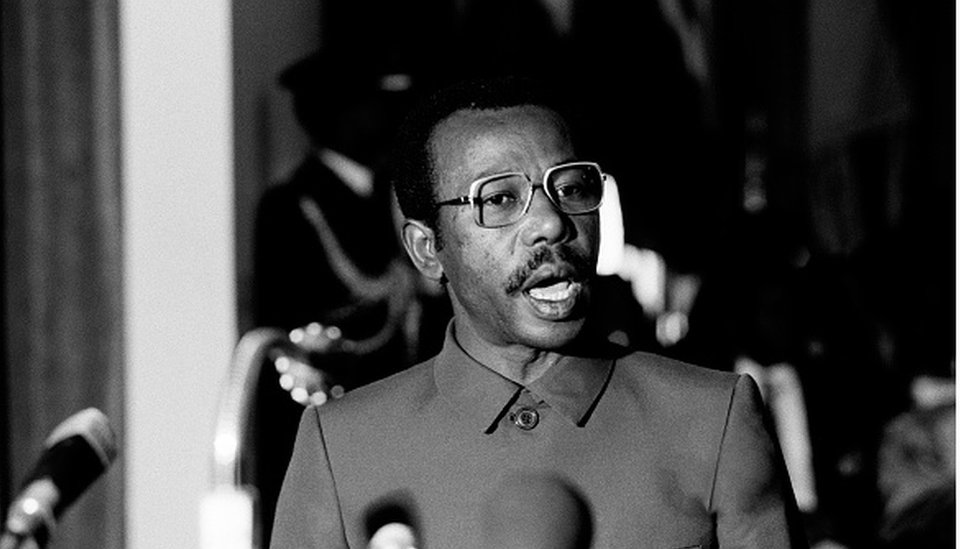
40/
In Zimbabwe, Mengistu became a security consultant to President Robert Mugabe and even advised Mugabe to pre-empt a possible mass revolt by clearing slums in Operation Murambatsvina in 2005.
He was sentenced to life in prison, in absentia, in 2007.
reuters.com/article/us-eth…
In Zimbabwe, Mengistu became a security consultant to President Robert Mugabe and even advised Mugabe to pre-empt a possible mass revolt by clearing slums in Operation Murambatsvina in 2005.
He was sentenced to life in prison, in absentia, in 2007.
reuters.com/article/us-eth…
41/
The fall of the Derg gave way to the TPLF’s Meles Zenawi (Tigrayan) as president of the Federal Democratic Republic of Ethiopia, with the army and intelligence services dominated by Tigrayans.
In 1995, Zenawi became PM under a new constitution.
theguardian.com/world/2020/nov…
The fall of the Derg gave way to the TPLF’s Meles Zenawi (Tigrayan) as president of the Federal Democratic Republic of Ethiopia, with the army and intelligence services dominated by Tigrayans.
In 1995, Zenawi became PM under a new constitution.
theguardian.com/world/2020/nov…
42/
At about the time in 1991 that Addis was falling to the EPRDF, Asmara in Eritrea was falling to the Eritrean People’s Liberation Front (EPLF).
Eritrea’s 30-yr war of independence ended and in 1993, they voted for a state independent from Ethiopia.
ethiopiantreasures.co.uk/pages/derg.htm
At about the time in 1991 that Addis was falling to the EPRDF, Asmara in Eritrea was falling to the Eritrean People’s Liberation Front (EPLF).
Eritrea’s 30-yr war of independence ended and in 1993, they voted for a state independent from Ethiopia.
ethiopiantreasures.co.uk/pages/derg.htm
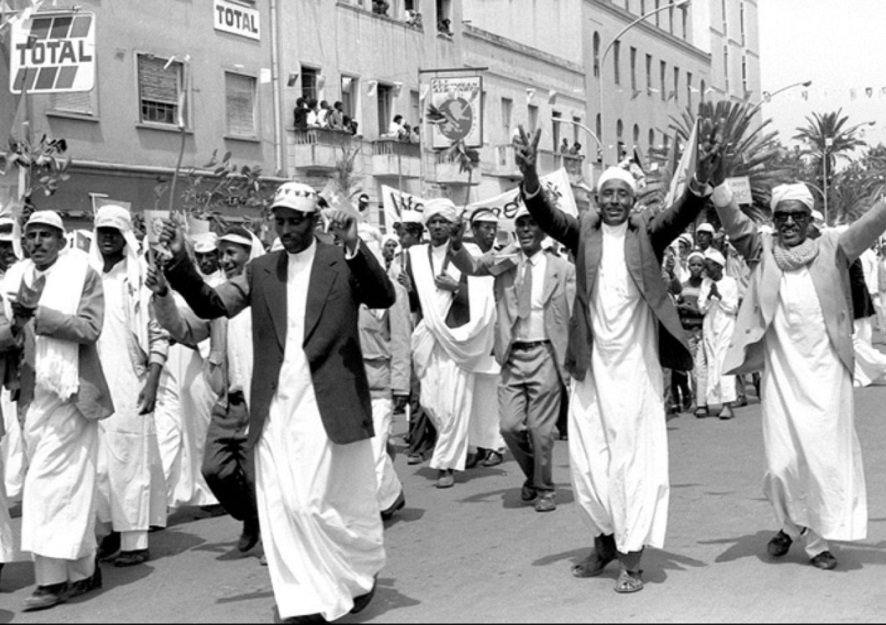
43/
Under Meles Zenawi, the econ grew (8.8% a yr btw 2000-10), foreign investment flowed in and major strides were made in education, health and development.
His record is however tainted by his admin’s intolerance of dissent and its authoritarianism.
theatlantic.com/international/…
Under Meles Zenawi, the econ grew (8.8% a yr btw 2000-10), foreign investment flowed in and major strides were made in education, health and development.
His record is however tainted by his admin’s intolerance of dissent and its authoritarianism.
theatlantic.com/international/…
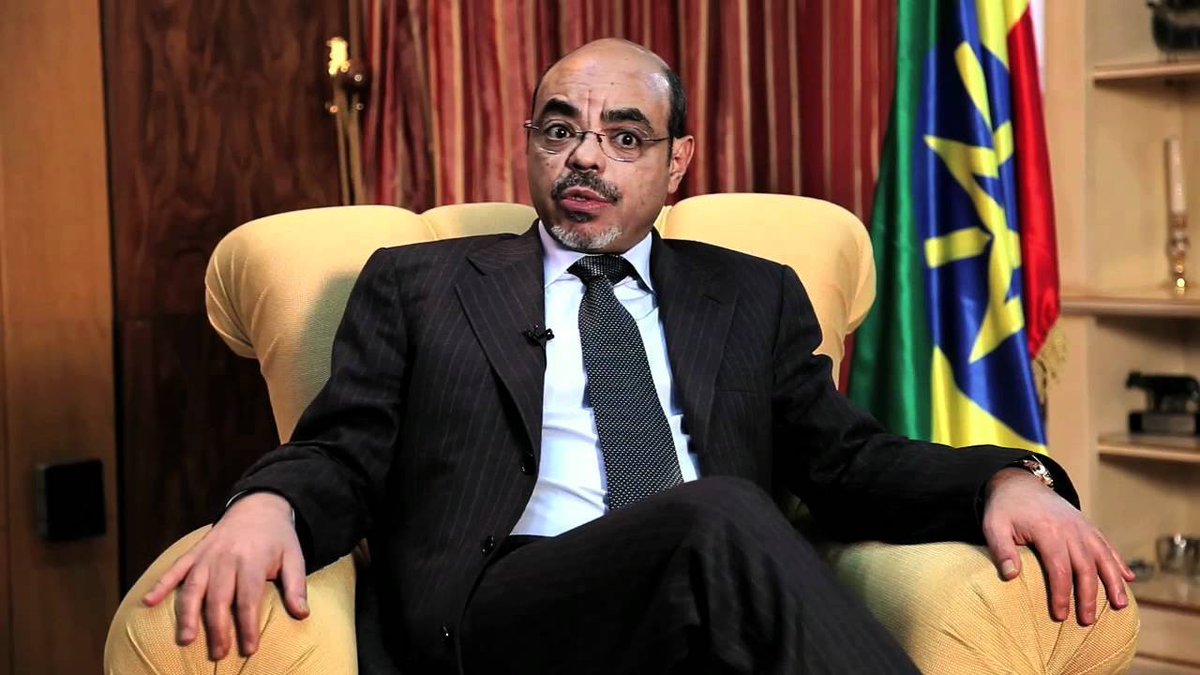
44/
After his death in 2012, Zenawi was succeeded by Hailemariam Desalegn (Wolayta) who resigned in Feb 2018 after 3 years of protests calling for economic and political reforms esp. in Oromia and Amhara.
Desalegn was replaced by Dr. Abiy Ahmed (Oromo)
bbc.com/news/world-afr…
After his death in 2012, Zenawi was succeeded by Hailemariam Desalegn (Wolayta) who resigned in Feb 2018 after 3 years of protests calling for economic and political reforms esp. in Oromia and Amhara.
Desalegn was replaced by Dr. Abiy Ahmed (Oromo)
bbc.com/news/world-afr…
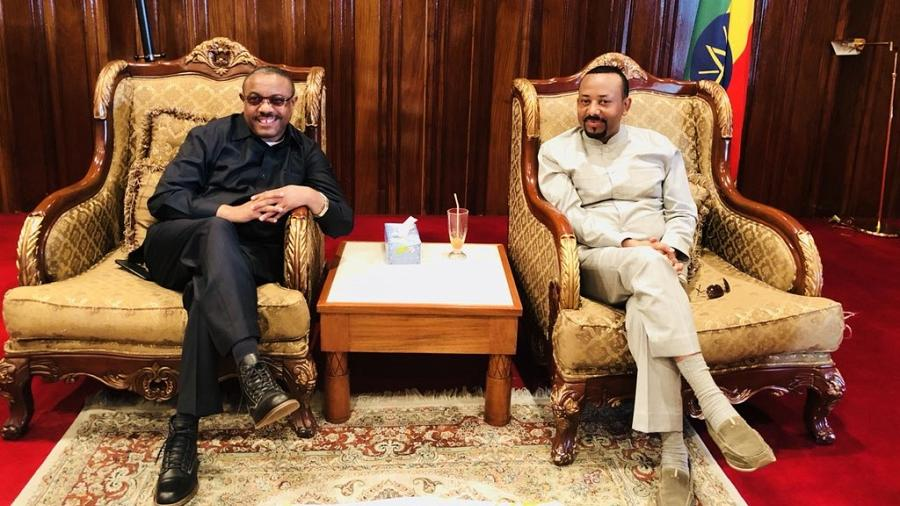
45/
While PM Ahmed went on to win the Nobel for his peace and reform efforts, things did not start out so rosy.
In June 2018, a grenade was hurled at his stage at a rally and in June 2019, the Ethiopian military chief was killed in an attempted coup.
npr.org/2019/06/23/735…
While PM Ahmed went on to win the Nobel for his peace and reform efforts, things did not start out so rosy.
In June 2018, a grenade was hurled at his stage at a rally and in June 2019, the Ethiopian military chief was killed in an attempted coup.
npr.org/2019/06/23/735…
46/
Later in 2019, the TPLF, which had been in power since 1991, felt sidelined by the PM and withdrew from the EPRDF.
Things had been a little tense between PM Ahmed and TPLF chief, Debretsion Gebremichael (pic) whom PM Ahmed beat in the 2018 elections.
bbc.com/news/world-afr…
Later in 2019, the TPLF, which had been in power since 1991, felt sidelined by the PM and withdrew from the EPRDF.
Things had been a little tense between PM Ahmed and TPLF chief, Debretsion Gebremichael (pic) whom PM Ahmed beat in the 2018 elections.
bbc.com/news/world-afr…
47/
In Mar 2020, PM Ahmed postponed the national elections scheduled for Aug 29, to 2021 citing the Covid-19 pandemic.
This did not go down well in Tigray where the TPLF defied the PM and held regional elections in September.
dw.com/en/crisis-loom…
In Mar 2020, PM Ahmed postponed the national elections scheduled for Aug 29, to 2021 citing the Covid-19 pandemic.
This did not go down well in Tigray where the TPLF defied the PM and held regional elections in September.
dw.com/en/crisis-loom…
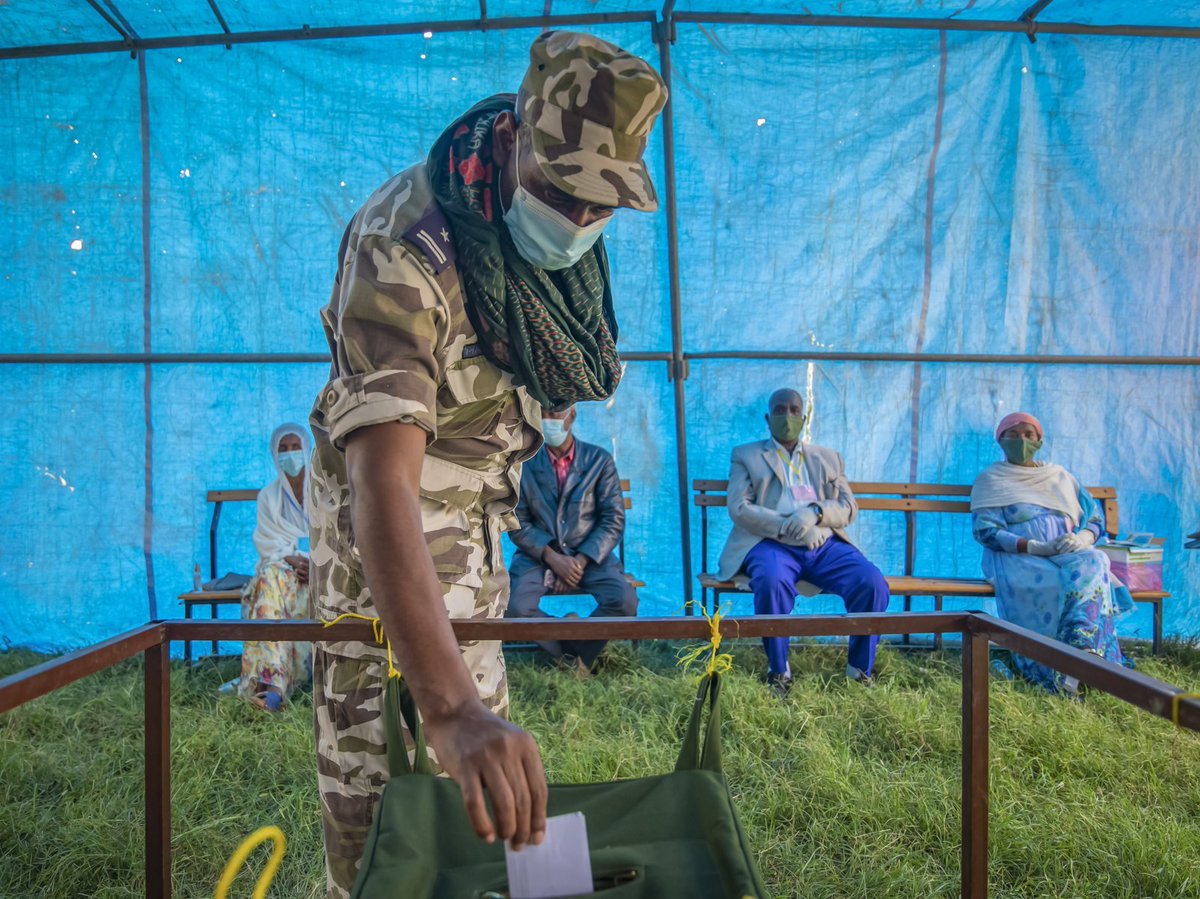
48/
On Nov 04, 2020, PM Ahmed accused the TPLF of carrying out an attack on the Ethiopian Military's Northern Command in Mekelle, which the TPLF denied.
This quickly escalated into a full-blown conflict in a region that the PM once described as 'the womb of Ethiopia' (Tigray).
On Nov 04, 2020, PM Ahmed accused the TPLF of carrying out an attack on the Ethiopian Military's Northern Command in Mekelle, which the TPLF denied.
This quickly escalated into a full-blown conflict in a region that the PM once described as 'the womb of Ethiopia' (Tigray).
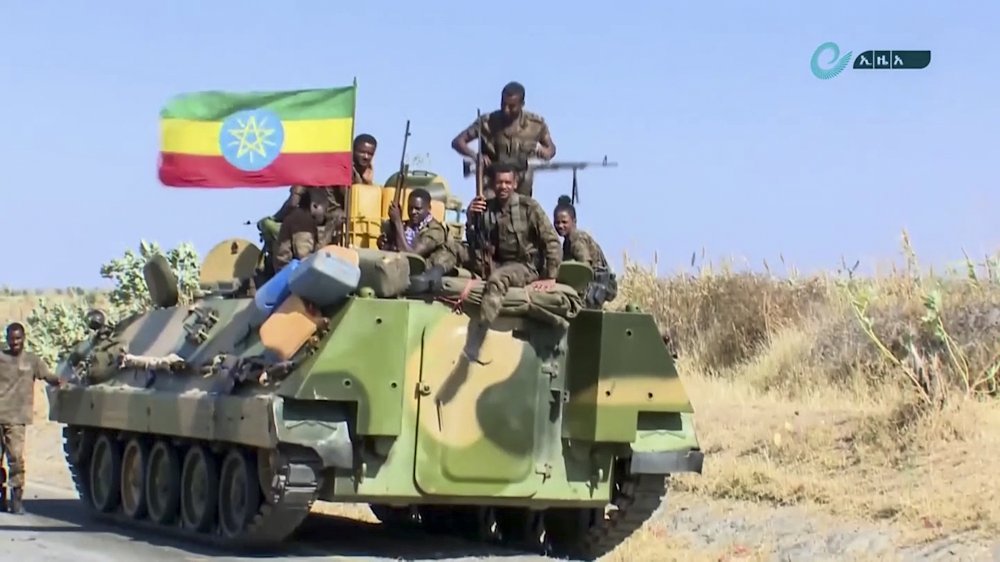
49/
As bombs rained on Tigray and thousands got displaced for the umpteenth time in a century, experts have warned of a regional crisis and even a Yugoslavia-like implosion.
One can only hope that a truce is reached and peace restored.
npr.org/2020/11/13/934…
As bombs rained on Tigray and thousands got displaced for the umpteenth time in a century, experts have warned of a regional crisis and even a Yugoslavia-like implosion.
One can only hope that a truce is reached and peace restored.
npr.org/2020/11/13/934…
50/
“Until the philosophy which holds one race superior and another inferior is finally and permanently discredited and abandoned, the dream of lasting peace and world citizenship will remain but a fleeting illusion.”
--Haile Selassie, 1963
Full speech: en.wikisource.org/wiki/Haile_Sel…
“Until the philosophy which holds one race superior and another inferior is finally and permanently discredited and abandoned, the dream of lasting peace and world citizenship will remain but a fleeting illusion.”
--Haile Selassie, 1963
Full speech: en.wikisource.org/wiki/Haile_Sel…

• • •
Missing some Tweet in this thread? You can try to
force a refresh














